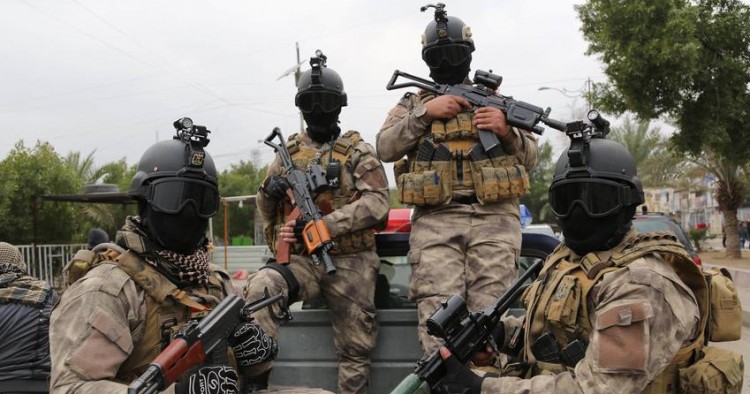With the fall of Mosul, Iranian-supported Iraqi Popular Mobilization Forces (P.M.F.) is preparing for post-Islamic State Iraq. The paramilitary forces have recently launched a professional public relations campaign on the Internet and social media aimed at justifying and legitimizing P.M.F.’s existence beyond the collapse of the Islamic State. Should the P.M.F. prevail in this effort, it will mark a victory for the Islamic Revolution Guards Corps (I.R.G.C.), which has aided P.M.F. groups for years and sees them crucial for its influence in Iraq in the future.
P.M.F.’s public relations campaign provides us with insights into the composition and performance of the force, both of which are likely to impact the P.M.F. itself and future of civil-military relations in Iraq. Most prominent among these websites is the Fatwa al-Defae al-Moqadassa [Fatwa of the Sacred Defense], which provides biographic information about more than 2,000 P.M.F. members killed in Iraq from March 15, 2014 to August 3, 2017 (the actual P.M.F. casualty number is certainly higher). In comparison, only 40 I.R.G.C. military advisers to the P.M.F. were killed in Iraq in the same time period.
While the places of origin of 331 [16 percent] fallen P.M.F. fighters is not known, natives of Basra Governorate constitute 594 or [29 percent] of P.M.F. combat fatalities and natives of Babil Governorate 225 [11 percent]. No other governorate reaches 10 percent of the total losses and no P.M.F. losses were registered from the predominantly Kurdish governorates of Dohuk, Erbil, Halabja and Sulaymaniyah.
These numbers are likely to play a major role in Shiite politics in Iraq: Governorates with the largest number of martyrs are likely to demand greater representation and influence in Iraqi politics through the P.M.F.
The place of death of 330 [16 percent] PMF fighters is not known. But 692 [34 percent] were killed in combat in Saladin Governorate, 472 [23 percent] in Anbar, 307 [15 percent] in Nineveh Governorate and 148 [7 percent] in Babil. Fatalities in other governorates is negligible. It is also worth noting that with the exception of the natives of Saladin – 46 of whom were killed in Saladin – very few P.M.F. fighters were killed in combat in their native governorates.
It is impossible to draw accurate conclusions on geographic division of labor between P.M.F. Shiite units based on a comparison of native governorates and places where these fighters were killed. Such an analysis requires information about the militia affiliation of the fighters, which is not available on Fatwa of the Sacred Defense website.
What these numbers, however, tell us is that the P.M.F. has had the logistical means to mobilize, train and deploy its fighters into combat zones. A shared combat experience, in spite of political differences between P.M.F. militia units, may have to a degree nurtured esprit de corps within the alliance. Finally, those militias may consider the P.M.F. as a useful legal fig leaf to continue their existence in Iraq. This in turn is likely to perpetuate a state of tension and rivalry between the P.M.F. and the regular Iraqi military. Moreover, it strengthens the I.R.G.C.’s clout in Iraq at the expense of regional stability and U.S. national security interests in Iraq and the broader region.
The Middle East Institute (MEI) is an independent, non-partisan, non-for-profit, educational organization. It does not engage in advocacy and its scholars’ opinions are their own. MEI welcomes financial donations, but retains sole editorial control over its work and its publications reflect only the authors’ views. For a listing of MEI donors, please click here.












